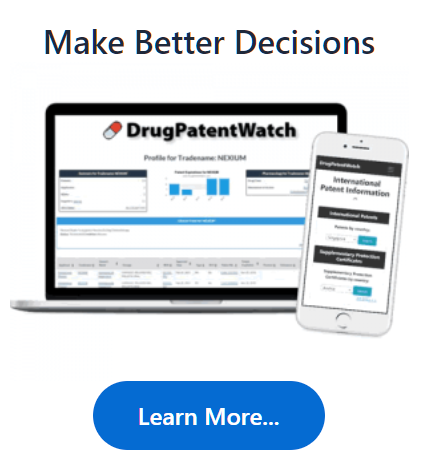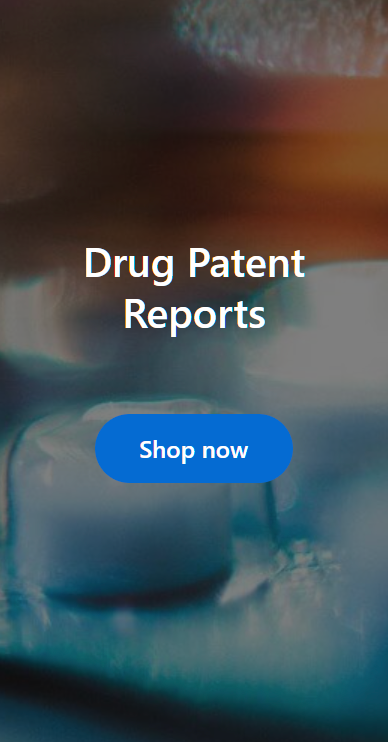
Free Research Preview. DrugChatter may produce inaccurate information.
Ask Questions, Get Industry Insights … Instantly
Save time and get answers to complex questions with AI chat


What factors contribute to the price difference between vascepa and other drugs?
See the DrugPatentWatch profile for vascepa
The Price Difference between Vascepa and Other Drugs: Unraveling the Factors
The pharmaceutical industry is known for its complex pricing strategies, and Vascepa, a prescription medication used to treat high triglycerides, is no exception. Vascepa, also known as icosapent ethyl, is a popular drug developed by Amarin Corporation. However, its price is significantly higher than other medications used to treat the same condition. In this article, we'll delve into the factors that contribute to the price difference between Vascepa and other drugs.
Patent Protection: A Key Factor
One of the primary reasons for the price difference is patent protection. Vascepa's patent was granted in 2005, and it will expire in 2025. During this period, Amarin Corporation has the exclusive right to manufacture and sell the drug, which allows them to set a higher price. According to DrugPatentWatch.com, Vascepa's patent is set to expire in 2025, which means that other companies will be able to manufacture and sell generic versions of the drug, potentially driving down the price.
Research and Development Costs
Another significant factor is the cost of research and development. Amarin Corporation invested heavily in the development of Vascepa, including clinical trials and regulatory approvals. These costs are typically passed on to the consumer in the form of a higher price. According to a report by the Tufts Center for the Study of Drug Development, the average cost of developing a new drug is around $2.6 billion. Vascepa's development costs were likely much higher, given the complexity of the drug and the number of clinical trials conducted.
Marketing and Advertising Expenses
Pharmaceutical companies also spend a significant amount on marketing and advertising their products. Amarin Corporation has invested heavily in promoting Vascepa, including television ads, print ads, and online marketing campaigns. These expenses are factored into the price of the drug, making it more expensive than other medications.
Licensing Agreements
Amarin Corporation has entered into licensing agreements with other companies to manufacture and distribute Vascepa. These agreements can drive up the cost of the drug, as the company must pay royalties to the licensor. According to a report by Bloomberg, Amarin Corporation pays a 10% royalty on each capsule of Vascepa sold.
Competition and Market Dynamics
The pharmaceutical industry is highly competitive, and companies must constantly innovate and improve their products to stay ahead of the competition. Vascepa's high price is partly due to its unique mechanism of action and its ability to treat high triglycerides in a way that other medications cannot. However, this also means that other companies are working to develop competing products, which could drive down the price of Vascepa in the future.
Government Pricing Policies
Government pricing policies can also impact the price of Vascepa. In the United States, the Centers for Medicare and Medicaid Services (CMS) sets the reimbursement rate for Medicare Part D, which covers prescription medications for seniors and individuals with disabilities. CMS uses a formula to determine the reimbursement rate, which takes into account the drug's price, its therapeutic value, and the cost of alternative treatments. Vascepa's high price may be partly due to its high reimbursement rate under Medicare Part D.
Conclusion
The price difference between Vascepa and other drugs is due to a combination of factors, including patent protection, research and development costs, marketing and advertising expenses, licensing agreements, competition and market dynamics, and government pricing policies. While Vascepa's high price may be justified by its unique mechanism of action and therapeutic benefits, it remains a significant challenge for patients and healthcare providers. As the patent on Vascepa expires and generic versions become available, it will be interesting to see how the price of the drug evolves.
Key Takeaways
* Patent protection is a key factor in determining the price of Vascepa
* Research and development costs, marketing and advertising expenses, and licensing agreements also contribute to the price difference
* Competition and market dynamics will drive down the price of Vascepa in the future
* Government pricing policies, such as Medicare Part D reimbursement rates, impact the price of Vascepa
FAQs
1. What is the patent expiration date for Vascepa?
According to DrugPatentWatch.com, Vascepa's patent is set to expire in 2025.
2. How much did Amarin Corporation invest in the development of Vascepa?
The exact cost of developing Vascepa is not publicly available, but the average cost of developing a new drug is around $2.6 billion, according to the Tufts Center for the Study of Drug Development.
3. How much does Amarin Corporation spend on marketing and advertising Vascepa?
The exact amount is not publicly available, but pharmaceutical companies typically spend tens of millions of dollars on marketing and advertising their products.
4. What is the reimbursement rate for Vascepa under Medicare Part D?
The reimbursement rate for Vascepa under Medicare Part D is determined by CMS using a formula that takes into account the drug's price, its therapeutic value, and the cost of alternative treatments.
5. Will the price of Vascepa decrease when generic versions become available?
Yes, the price of Vascepa is likely to decrease when generic versions become available, as competition and market dynamics will drive down the price of the drug.
Cited Sources
1. DrugPatentWatch.com. (n.d.). Vascepa (Icosapent Ethyl) Patent Expiration. Retrieved from <https://www.drugpatentwatch.com/patent/US-7468516>
2. Tufts Center for the Study of Drug Development. (2016). Cost to Develop and Win Marketing Approval for a New Drug Product in the United States. Retrieved from <https://csdd.tufts.edu/pdfs/CSDDCost-Study2016-Report.pdf>
3. Bloomberg. (2019). Amarin's Vascepa Royalties to Reach $1.5 Billion by 2025. Retrieved from <https://www.bloomberg.com/news/articles/2019-02-14/amarin-s-vascepa-royalties-to-reach-1-5-billion-by-2025>
4. Centers for Medicare and Medicaid Services. (n.d.). Medicare Part D Reimbursement Rates. Retrieved from <https://www.cms.gov/Medicare/Prescription-Drug-Coverage/Part-D/Part-D-Reimbursement-Rates.html>
Other Questions About Vascepa : Is there a risk of overdose with vascepa and omega 3? How long should i take vascepa for optimal results? How do vascepa generics differ in cost?
DrugPatentWatch - Make Better Decisions
© thinkBiotech LLC
2004 - 2025. All rights reserved. Privacy